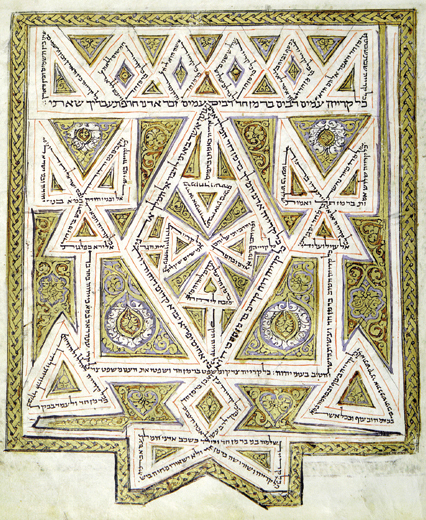Image Details

Bruce and Kenneth Zuckerman, West Semitic Research, in collaboration with the Ancient Biblical Manuscript Center
Decorated with geometric patterns resembling the elaborate ornamental details found on Near Eastern rugs, this folio is one of 16 illuminated “carpet pages” from the Leningrad Codex—the oldest complete Hebrew Bible in existence. Dating to about 1010 C.E., the Leningrad Codex preserves the Masoretic Text (MT) of the Hebrew Bible, so named because it was the text passed down by generations of scribes known as Masoretes. As author James A. Sanders points out, the Masoretes worked carefully and systematically to transmit a stable biblical text free of scribal error and alterations. Largely due to this meticulous attention, the MT has long served as the base text for modern scholarly editions of the Hebrew Bible. Unlike Ronald Hendel, Sanders feels that it should continue to be the base text for future editions.
In responding to Hendel’s call for an eclectic edition of the Hebrew Bible, Sanders suggests that efforts to arrive at an “original reading” of the biblical text are influenced by the academic biases of the various scholars who analyze textual variants. Moreover, he argues that scholars should avoid mixing variant readings from different manuscript sources until they have a much fuller understanding of the separate scribal traditions from which these sources emerged. In the meantime, he concludes, scholarly editions of the Hebrew Bible should keep the debate over variant readings in the footnotes.
